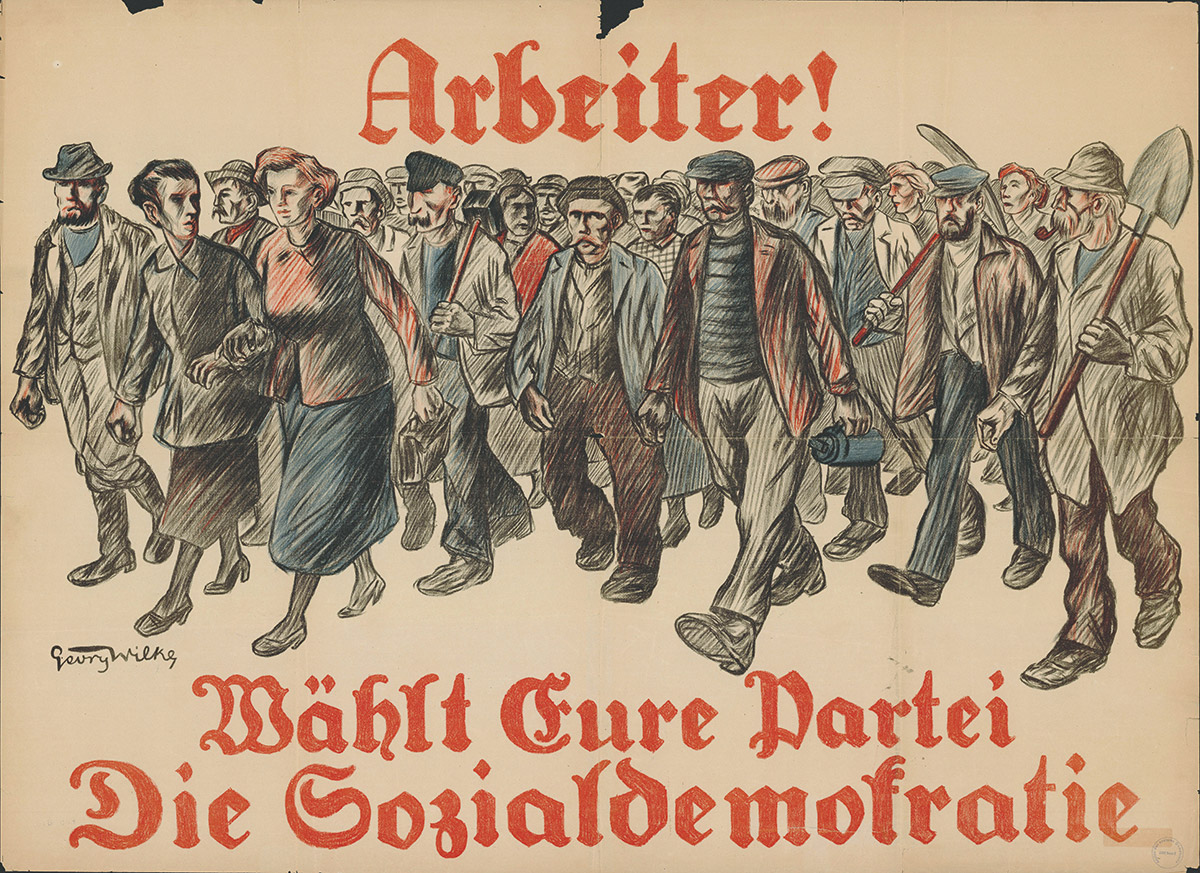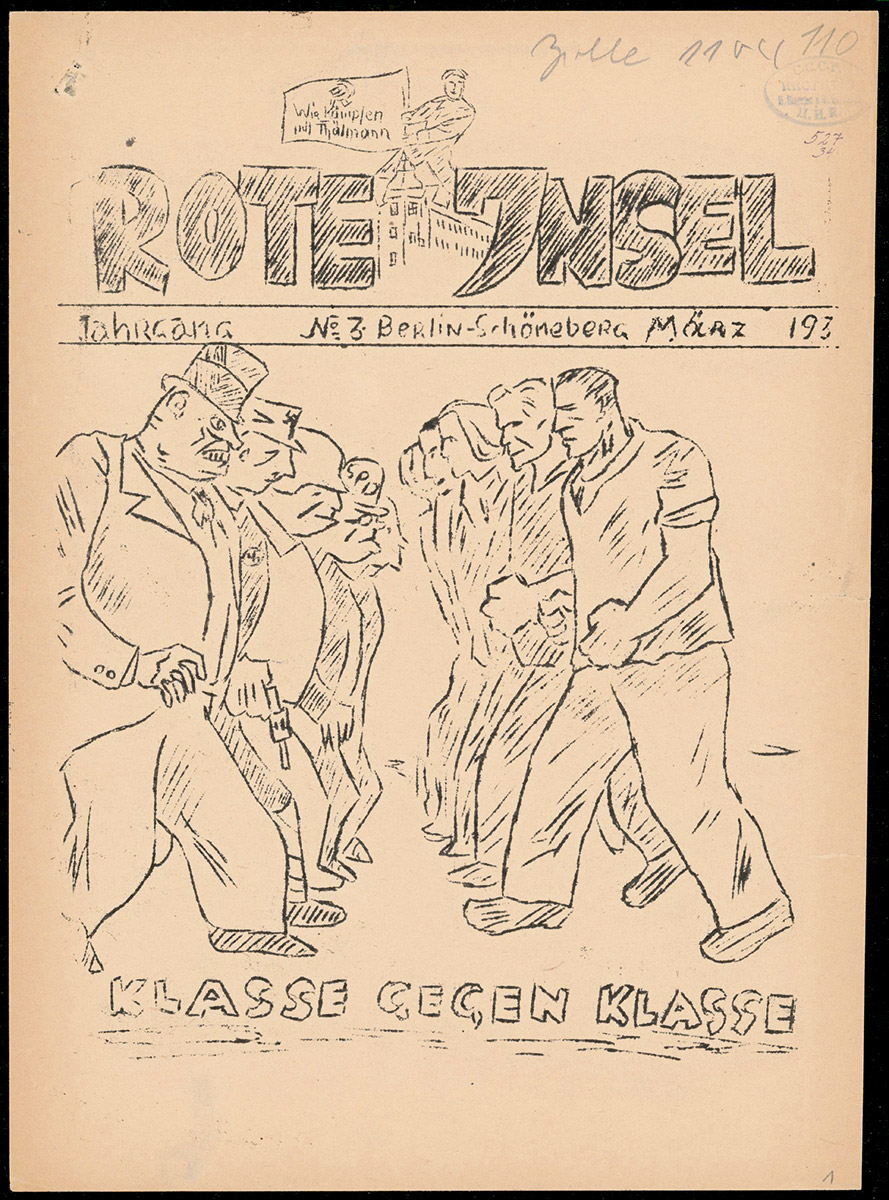The “Rote Insel”
Since when and why the Schöneberger Insel is called the “Rote Insel” (Red Island) is in dispute. One tale goes back to the year 1878 and claims that the beverage distributor Bäcker from Sedanstrasse 22 (now Leberstrasse) hung a red flag out of his window when Kaiser Wilhelm I was driving by – in protest against the Anti-Socialist Laws. Another explanation derives the name from the red collar patches worn by the railway troops that were stationed on the Insel.
The island surrounded by train tracks and industrial sites was the “East End” of Schöneberg. Apart from the military, many class-conscious workers lived here. They were politically closely allied with the social democrats and communists, in other words, they voted “red”.
Particularly the “red” Sedanstrasse, Cheruskerstrasse and Gotenstrasse were strongly proletarian. In the Reichstag elections of 1903 and 1907 the polling station at Sedansstrasse 55 registered almost 70% of the votes for the SPD.
In the 1920s the innkeeper Emil Potratz ran a kind of meeting point for the KPD at Sedanstrasse 53. Party assemblies were held there and the Alliance of Red Front Fighters (“Rotfront”) and the Communist Youth League met there. On 6 September 1929 SA men attacked the place and vandalised it.
In the final phase of the Weimar Republic violent confrontations repeatedly broke out between Nazis and communists on the “Rote Insel”.


